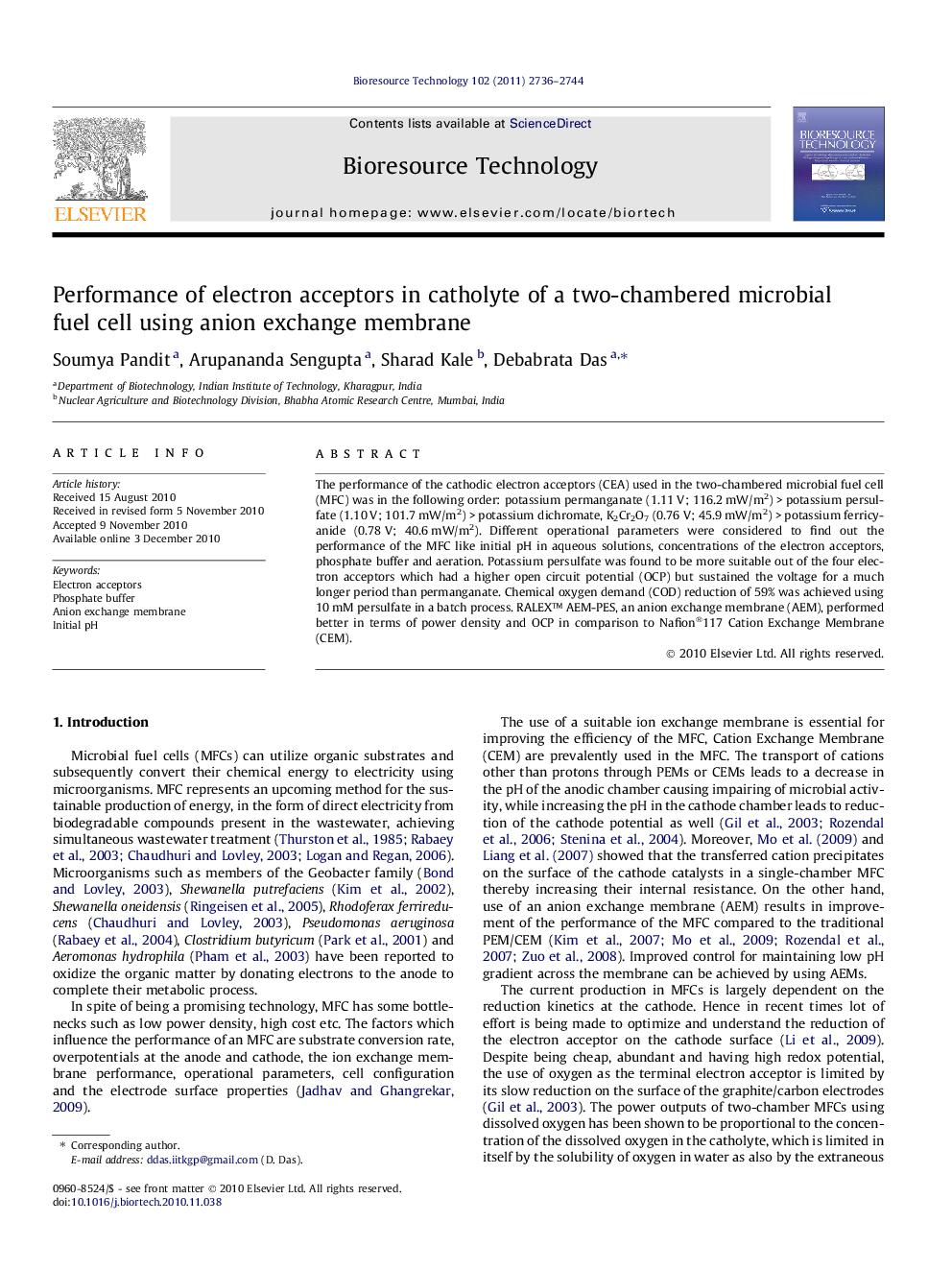| Article ID | Journal | Published Year | Pages | File Type |
|---|---|---|---|---|
| 10395437 | Bioresource Technology | 2011 | 9 Pages |
Abstract
The performance of the cathodic electron acceptors (CEA) used in the two-chambered microbial fuel cell (MFC) was in the following order: potassium permanganate (1.11 V; 116.2 mW/m2) > potassium persulfate (1.10 V; 101.7 mW/m2) > potassium dichromate, K2Cr2O7 (0.76 V; 45.9 mW/m2) > potassium ferricyanide (0.78 V; 40.6 mW/m2). Different operational parameters were considered to find out the performance of the MFC like initial pH in aqueous solutions, concentrations of the electron acceptors, phosphate buffer and aeration. Potassium persulfate was found to be more suitable out of the four electron acceptors which had a higher open circuit potential (OCP) but sustained the voltage for a much longer period than permanganate. Chemical oxygen demand (COD) reduction of 59% was achieved using 10 mM persulfate in a batch process. RALEX⢠AEM-PES, an anion exchange membrane (AEM), performed better in terms of power density and OCP in comparison to Nafion®117 Cation Exchange Membrane (CEM).
Related Topics
Physical Sciences and Engineering
Chemical Engineering
Process Chemistry and Technology
Authors
Soumya Pandit, Arupananda Sengupta, Sharad Kale, Debabrata Das,
